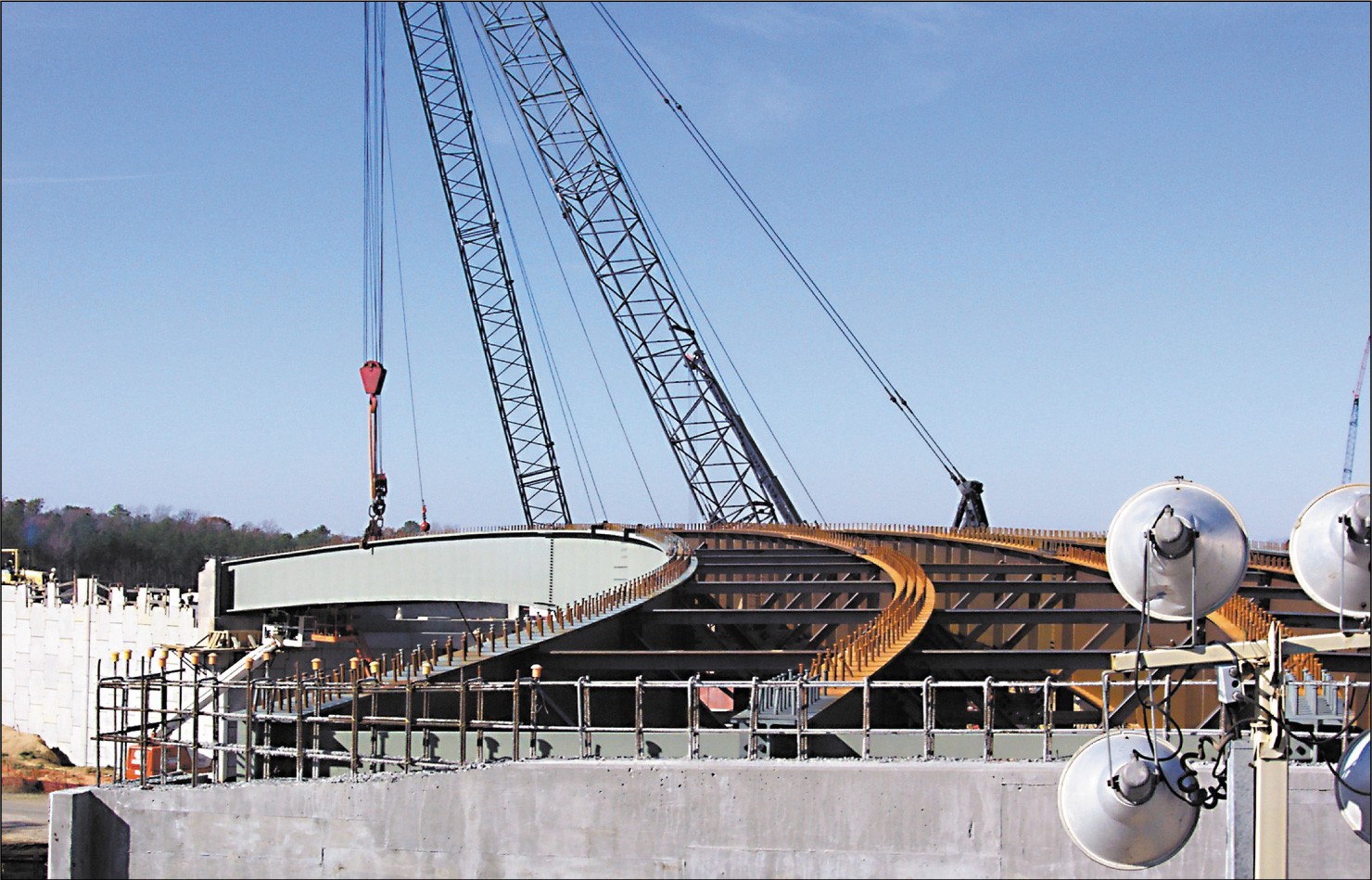FORT LEE, Va. -- With the final shipment of steel delivered, contractors began erecting the remaining pieces on the Route 36 flyover bridge in early December 2008 and are on schedule for a May 2010 completion date.
The flyover bridge, which has been responsible for delays and detours along Route 36 over the past couple weeks, serves as the main traffic artery in and out of the new U.S. Army Ordnance Center and School [which is scheduled to begin moving to Fort Lee later in the summer of 2009].
The OC&S is being constructed under the Base Realignment and Closure Commission decisions that were signed into law in 2005. As a result of BRAC, Fort Lee is expected to double in size in terms of infrastructure and personnel. This growth will result in an economic impact of more than $1.7 billion.
"The bridge marks a milestone in construction for the installation because it ties directly to the infrastructure and links the main area of Fort Lee to our biggest construction site, the Ordnance Center and School," said Albert Cruz, Fort Lee BRAC Construction Office project manager.
The OC&S is situated on 380 acres and will support an average of 4,500 military students and instructors daily.
The flyover bridge will serve as the sole entry point to the $700 million state-of-the-art training campus.
According to the Norfolk District of the U.S. Army Corps of Engineers, the flyover bridge is being built under a $45 million infrastructure project awarded to Fort Sill Apache Industries to develop the site of the future OC&S. The bridge itself is valued at approximately $4.5 million.
Comprised of 15 individual curved beams weighing between 13 and 43.5 tons each, the flyover bridge has already presented many unique challenges.
"The curve of the beam makes construction challenging because you have to be more precise when picking them up with the cranes," said Maj. John O'Brien, project engineer with the CoE. "The beams have a tendency to cant, which makes it harder to line up the bolt holes and brace the beams together."
Due to their weight and size, each beam requires two cranes to lift and maneuver them into place for attachment. Beams are spliced together while suspended in the air with anywhere from 188 to 376 bolts.
The weather and working at night have proved to be the other major challenges with the project.
"Working at night, when it's cold and windy, makes it harder for the workers who physically have to handle the steel," O'Brien said.
Despite the challenges, O'Brien said the overall construction has progressed smoothly with no major setbacks that could alter the scheduled completion date.
"I attribute the majority of success to the planning process," O'Brien said. "We understood going in what the challenges were going to be. The contractors, the Virginia Department of Transportation and Fort Lee personnel did a great job of creating plans to ensure the project would continue to flow smoothly."
O'Brien said the bridge serves as a symbol of Fort Lee expanding outward and the growth taking place across Route 36.
"It also serves as a physical symbol of all the hard work taking place here," he said.


Social Sharing